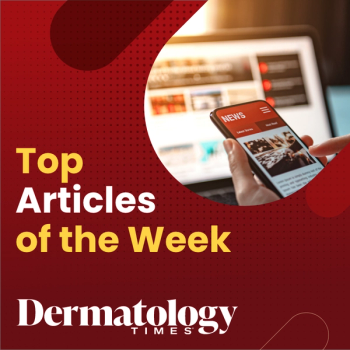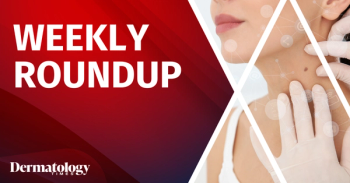
Top 5 Articles of the Month: May
Key Takeaways
- Pelage Pharmaceuticals' PP405 is advancing in clinical trials for androgenetic alopecia, with ongoing enrollment in the US.
- An electrotrichogenic device demonstrated significant hair regrowth in men with androgenetic alopecia, with increased hair density and thickness.
Explore the top headlines of the week including insights on regulatory updates, expert pearls, and more.
To stay up-to-date with the latest dermatology news, sign up to receive our
1. Q&A: Pelage's Novel PP405 Advances to Phase 2a for Androgenetic Alopecia
Dermatology Times recently spoke with Qing Yu Christina Weng, MD, chief medical officer of Pelage. Weng is a physician scientist and board-certified dermatologist seeing patients at
2. Electrotrichogenic Niostem Device Promotes Hair Growth in Men with Androgenetic Alopecia
A new at-home electrotrichogenicniostem device showed promising results in men with androgenetic alopecia, with 100% of participants experiencing visible hair regrowth after 6 months of daily use. The pilot study involved 20 men aged 21–40, all of whom had moderate hair loss and discontinued other treatments beforehand. The lightweight, wearable device uses low-level electrical stimulation via brush electrodes to promote hair growth. After 6 months, hair density increased by 19.3%, thickness by 8.8%, and terminal hair count significantly improved. No serious adverse effects were reported, with only mild, temporary discomfort in a few users. Researchers highlight its safety, ease of use, and potential cumulative benefits, though they note that larger, controlled studies are needed to confirm results and broaden applicability.
3. AI Model Creates Successful Treatment Regimens for Women with Hair Loss
A recent clinical study demonstrated that artificial intelligence (AI) can effectively personalize hair loss treatments, significantly improving hair growth, thickness, volume, and scalp health over 6 months. The trial, which included 27 women with self-reported hair thinning, used an AI model developed by MDalgorithms, Inc. that analyzed smartphone images and questionnaires to recommend customized over-the-counter regimens. These included shampoos, serums, supplements, and ingredients like biotin, caffeine, and marine collagen. Results showed marked improvements across all measured parameters, including a 69% reduction in transepidermal water loss and reduced hair shedding. Nearly 90% of participants reported visible hair improvement with no adverse effects. The findings highlight AI’s potential to offer accessible, non-medicated, and cost-effective hair care solutions that complement in-person dermatological treatment.
4. Understanding Chronic Hand Eczema: Cellular Mechanisms and Therapeutic Implications
Characterized by dryness, fissures, pain, and intense itching, chronic hand eczema (CHE) often leads to social stigma, anxiety, and even job loss. The disease results from a cycle of skin barrier dysfunction and immune activation, including innate and adaptive responses involving Th1, Th2, and Th17/Th22 pathways. Keratinocytes play an active role in inflammation and contribute to epidermal thickening and neurogenic itch. Standard treatments include corticosteroids and immunosuppressants, though many patients remain refractory. Emerging biologics and precision therapies show promise, but more research is needed to develop targeted, effective solutions for this complex and emotionally burdensome disease.
5. Upadacitinib Shows Promise in Reducing Cardiovascular and Thrombotic Risks in Atopic Dermatitis Patients
A recent review published in the Journal of Drugs in Dermatology suggests that upadacitinib, a selective JAK1 inhibitor approved for moderate to severe atopic dermatitis (AD), may also offer cardioprotective and thromboprotective benefits. While chronic inflammation in AD is known to increase the risk of cardiovascular events and blood clots, data from long-term clinical trials—including Measure Up 1 and 2—indicated that patients on upadacitinib had lower rates of major adverse cardiovascular events (MACE) and venous thromboembolism (VTE) than the general AD population. MACE incidence in treated patients was as low as 0.1–0.2 per 100 patient-years, compared to 0.3–1.2 in AD cohorts. VTE rates were similarly reduced. Though these findings are promising, the authors emphasize that further research, including randomized controlled trials, is needed to confirm upadacitinib’s systemic benefits beyond skin symptom control.
Want to hear more pearls and expert insights on AD? Join us at the annual
Newsletter
Like what you’re reading? Subscribe to Dermatology Times for weekly updates on therapies, innovations, and real-world practice tips.


















